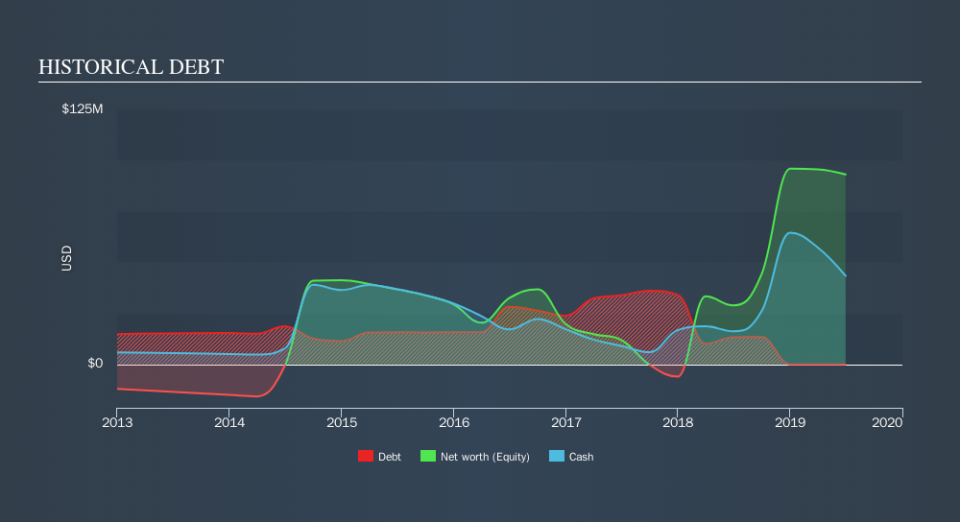We're Excited To See How CareDx (NASDAQ:CDNA) Uses Its Cash Hoard To Grow

There's no doubt that money can be made by owning shares of unprofitable businesses. For example, although software-as-a-service business Salesforce.com lost money for years while it grew recurring revenue, if you held shares since 2005, you'd have done very well indeed. Having said that, unprofitable companies are risky because they could potentially burn through all their cash and become distressed.
So should CareDx (NASDAQ:CDNA) shareholders be worried about its cash burn? In this article, we define cash burn as its annual (negative) free cash flow, which is the amount of money a company spends each year to fund its growth. First, we'll determine its cash runway by comparing its cash burn with its cash reserves.
View our latest analysis for CareDx
When Might CareDx Run Out Of Money?
A company's cash runway is calculated by dividing its cash hoard by its cash burn. When CareDx last reported its balance sheet in June 2019, it had zero debt and cash worth US$43m. Looking at the last year, the company burnt through US$3.2m. That means it had a cash runway of very many years as of June 2019. Notably, however, analysts think that CareDx will break even (at a free cash flow level) before then. In that case, it may never reach the end of its cash runway. You can see how its cash balance has changed over time in the image below.
How Well Is CareDx Growing?
Happily, CareDx is travelling in the right direction when it comes to its cash burn, which is down 81% over the last year. This reduction was no doubt supported by its strong revenue growth of 81% in the same period. Overall, we'd say its growth is rather impressive. While the past is always worth studying, it is the future that matters most of all. So you might want to take a peek at how much the company is expected to grow in the next few years.
Can CareDx Raise More Cash Easily?
There's no doubt CareDx seems to be in a fairly good position, when it comes to managing its cash burn, but even if it's only hypothetical, it's always worth asking how easily it could raise more money to fund growth. Generally speaking, a listed business can raise new cash through issuing shares or taking on debt. Commonly, a business will sell new shares in itself to raise cash to drive growth. By comparing a company's annual cash burn to its total market capitalisation, we can estimate roughly how many shares it would have to issue in order to run the company for another year (at the same burn rate).
CareDx's cash burn of US$3.2m is about 0.3% of its US$1.2b market capitalisation. That means it could easily issue a few shares to fund more growth, and might well be in a position to borrow cheaply.
So, Should We Worry About CareDx's Cash Burn?
As you can probably tell by now, we're not too worried about CareDx's cash burn. For example, we think its revenue growth suggests that the company is on a good path. And even its cash burn reduction was very encouraging. It's clearly very positive to see that analysts are forecasting the company will break even fairly soon Taking all the factors in this report into account, we're not at all worried about its cash burn, as the business appears well capitalized to spend as needs be. While it's important to consider hard data like the metrics discussed above, many investors would also be interested to note that CareDx insiders have been trading shares in the company. Click here to find out if they have been buying or selling.
Of course, you might find a fantastic investment by looking elsewhere. So take a peek at this free list of interesting companies, and this list of stocks growth stocks (according to analyst forecasts)
We aim to bring you long-term focused research analysis driven by fundamental data. Note that our analysis may not factor in the latest price-sensitive company announcements or qualitative material.
If you spot an error that warrants correction, please contact the editor at editorial-team@simplywallst.com. This article by Simply Wall St is general in nature. It does not constitute a recommendation to buy or sell any stock, and does not take account of your objectives, or your financial situation. Simply Wall St has no position in the stocks mentioned. Thank you for reading.


